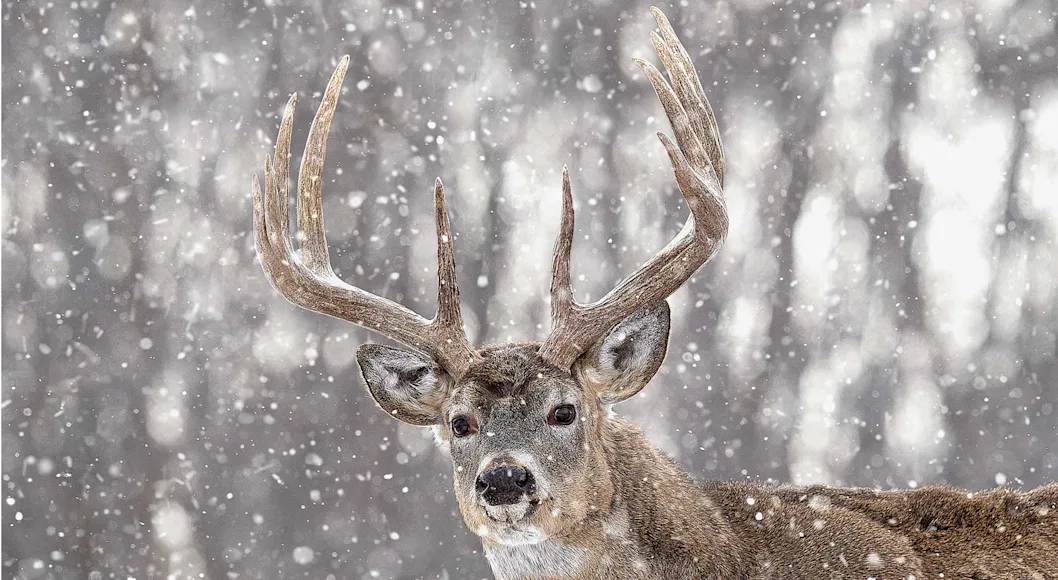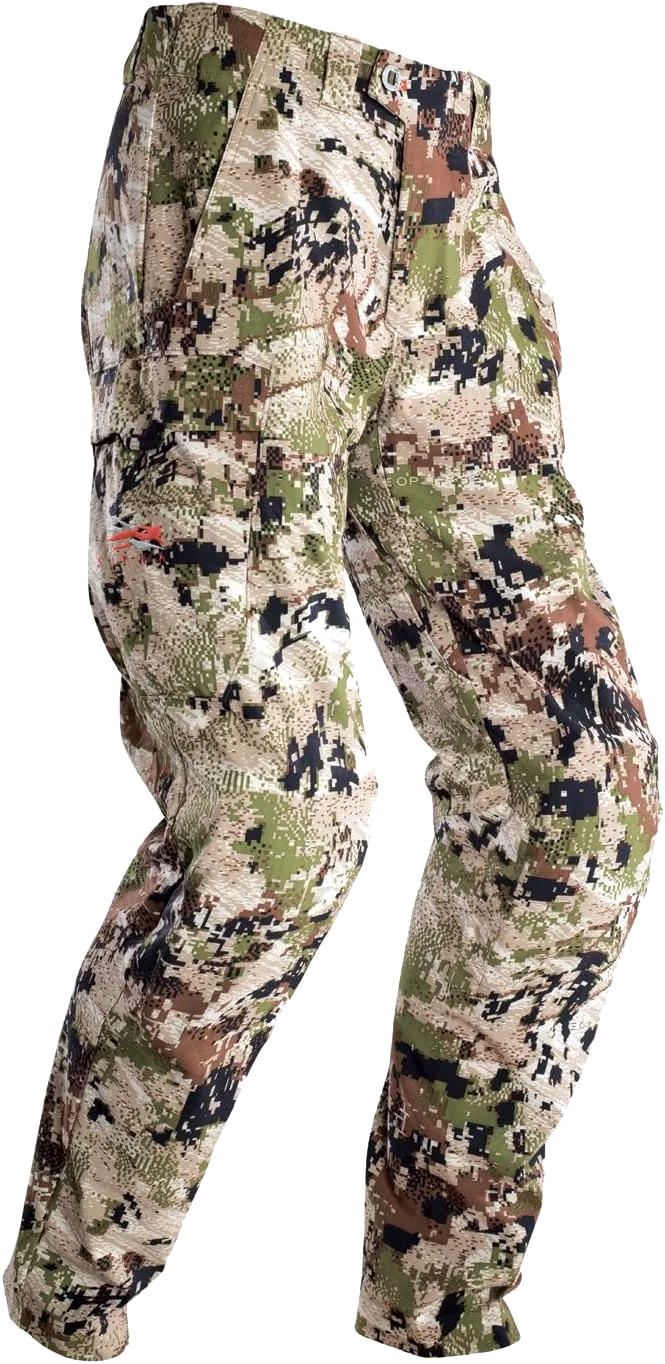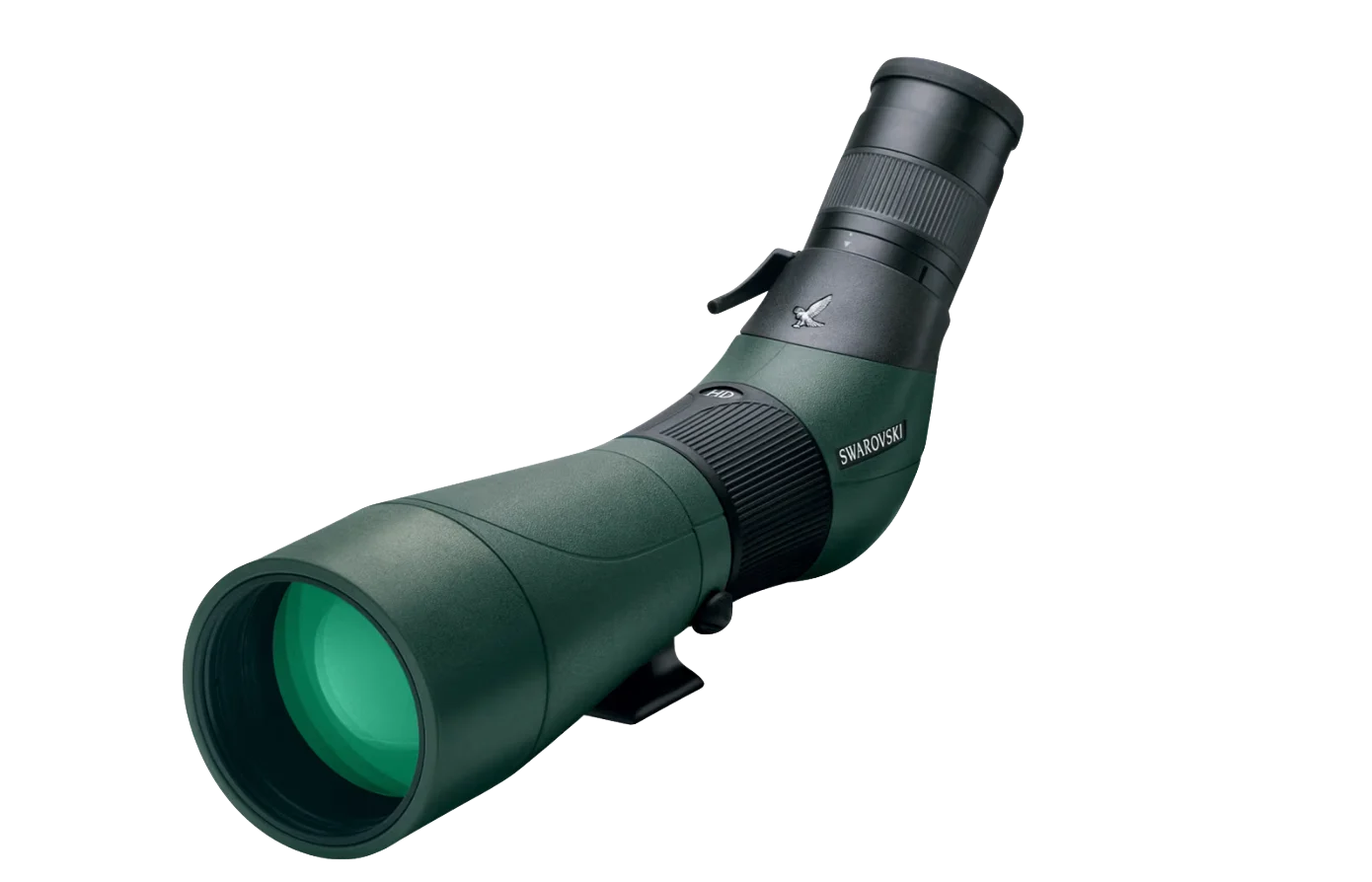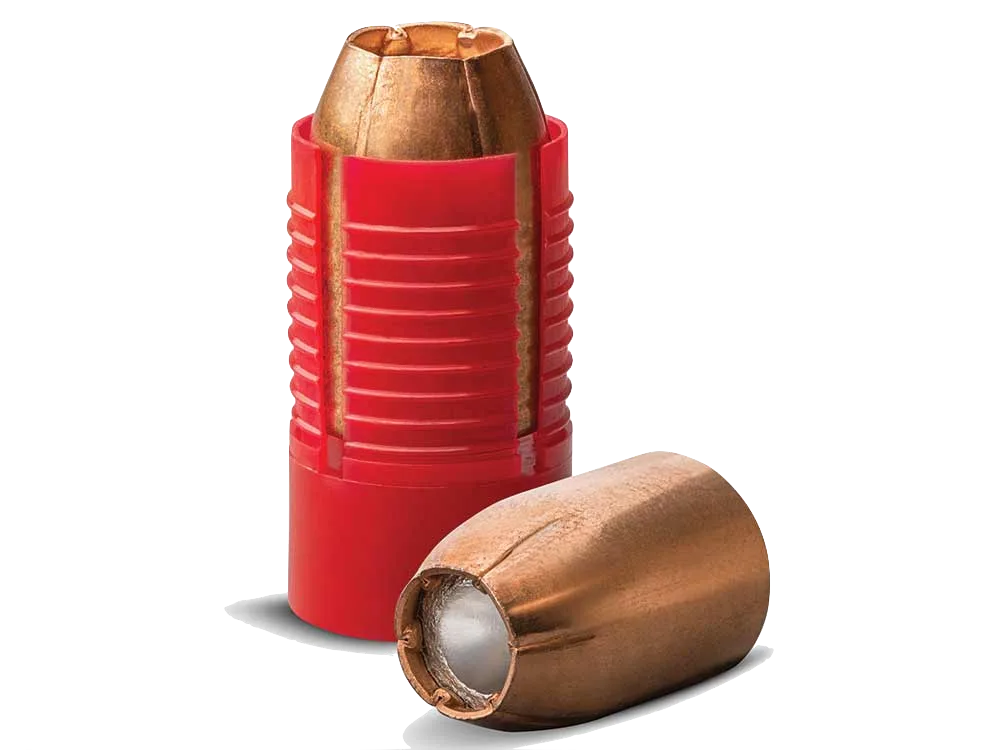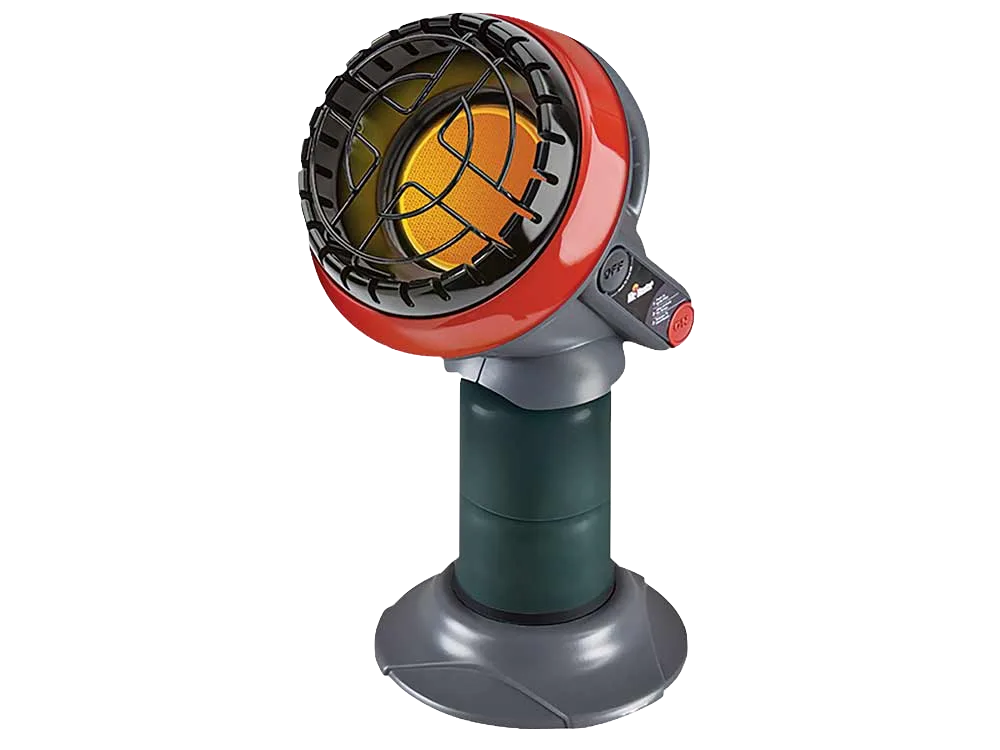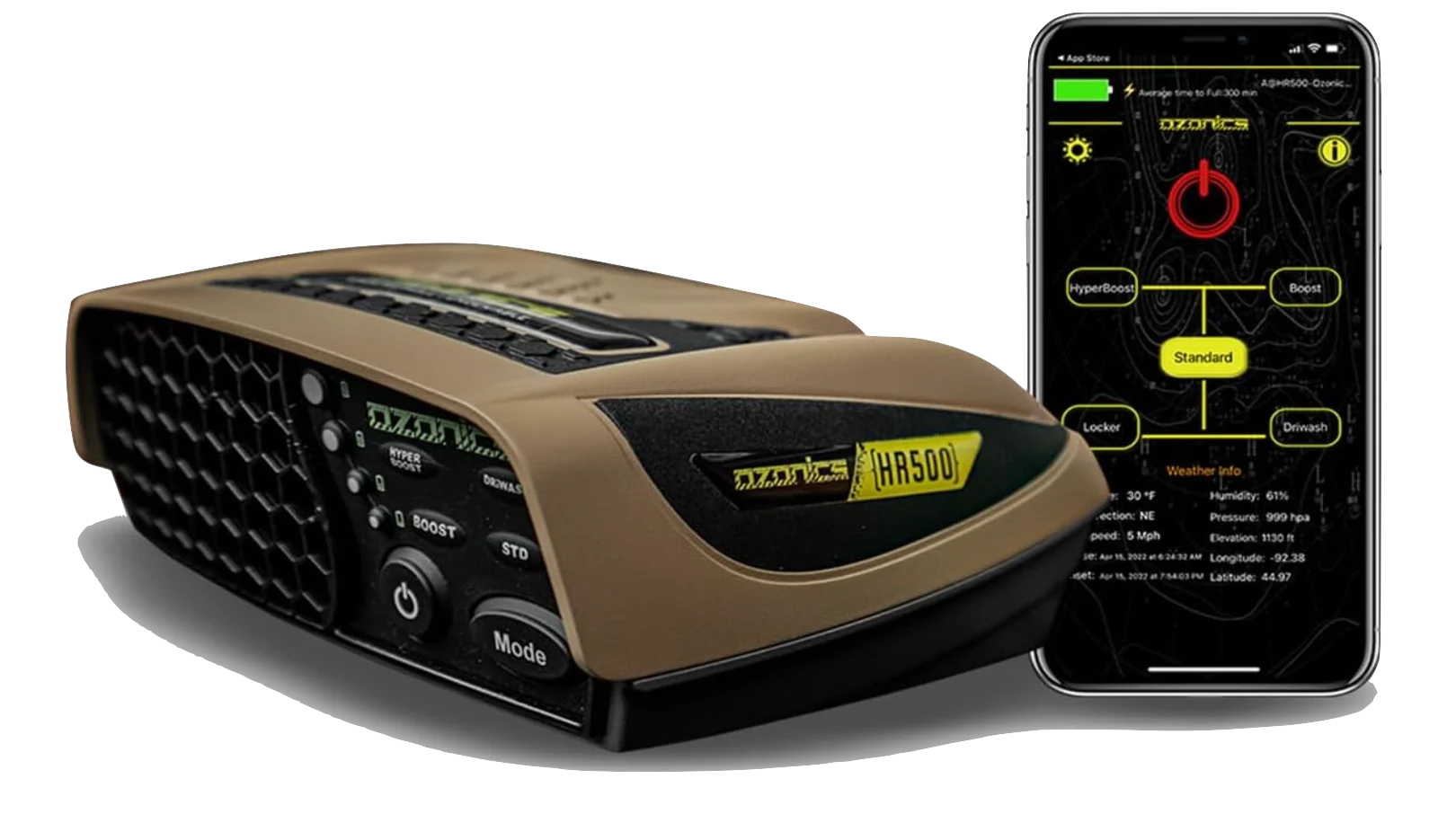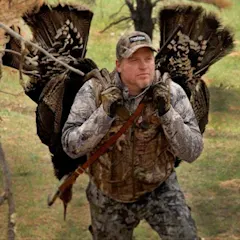Some people just know how to get it done in the end—they know how to close Game 7 or run the 2-minute drill or wrap up the deer season with an absolute stud of a buck. They’re the kind of people you want to emulate and learn from. And to help you do just that, we reached out to four expert whitetail hunters known for getting it done when the season is on the line. Together, these closers have tagged more than 70 Pope and Young and Boone and Crockett trophies in the late fall or winter, and they will tell you exactly how to end this season with your best buck ever.
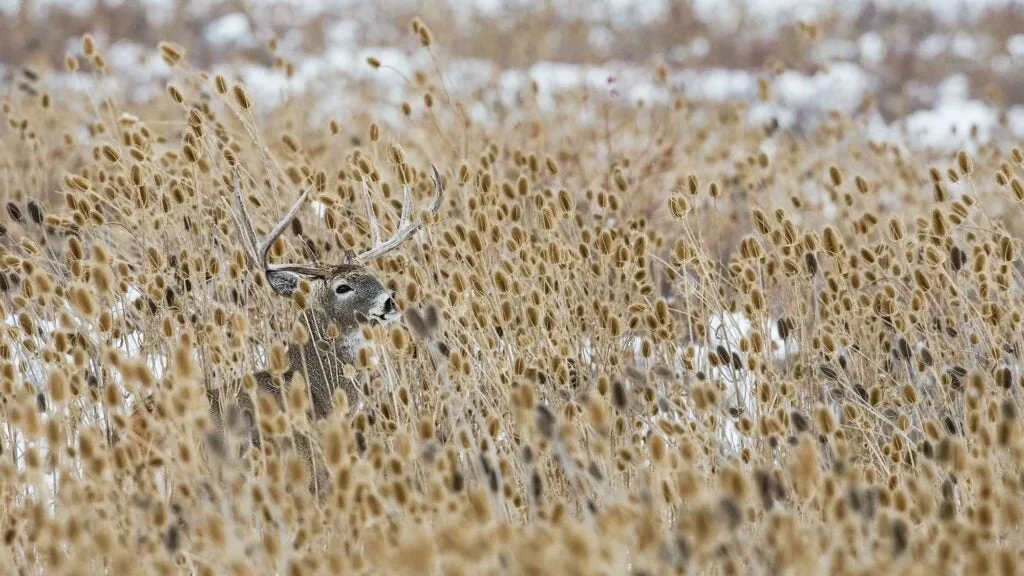
The Closer: Tony Trietch
Method: Archery Spot and Stalk
Primary Hunting Area: Rocky Mountains and Plains States
Credentials: Trietch has taken more than two dozen P&Y and B&C bucks during the late season. His best post-rut whitetail and muley both grossed nearly 190 B&C.
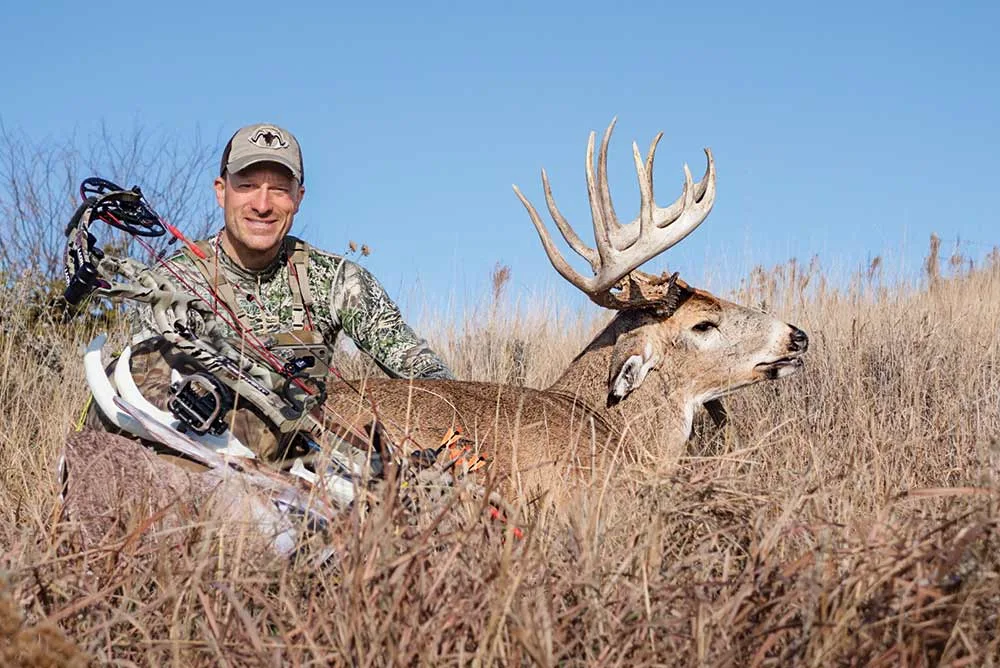
Every year, starting in late August, Michigan custom-home builder Tony Trietch hits the road to fill big-game archery tags on public land around the West. He’ll return home for a stretch in mid-October, but then it’s back to the mountains or onto the plains well into winter. During a typical season, he’ll hunt more than 100 days in five states. He’ll drive over 10,000 miles and cover somewhere between 700 and 1,000 on foot. But his favorite part of it all is the late season, when he focuses on spot-and-stalk hunting for big muleys and whitetails. “The game becomes simpler and more solitary,” he explains. “Winter bucks have one thing on their minds—food. If you find a good food source and put the time in behind your glass, you’ll find a good buck, and you know he’s not going anywhere. If I can watch a good buck bed down on the prairie or in the foothills, I almost always feel like I can get him.” Plus, lots of guys are tagged out, burned out, or don’t want to deal with the tough conditions. “I love the solitude of the late season,” he says. “If you’re willing to hike to get away from the roads and easy access points, you can often have these deer to yourself—even on public land.” —D.H.

11 Tips, Tricks, and Truisms About Stalking Late-Season Western Bucks
I shot a nice buck in Illinois back in 2011, and that was the last time I hunted from a treestand. My dad used to tell me, “Trying to kill a whitetail from the ground is for fools.” Well, I’ve become a fool, I guess. When I started hunting western Kansas, I slowly realized that you didn’t have to bowhunt from 20 feet up. First off, there aren’t many places to hang a stand. Second, they’re never in the right spots. But most important, I learned to stop equating “deer habitat” with “trees.”
Don’t get me wrong. If I went back to the broken, wooded terrain of Iowa or Illinois, I’d hunt from a stand like everyone else. But I’m the sort of person who can’t sit still. Sitting long hours for days on end was torture for me. When I went West and ditched the stand, it was incredibly liberating—and way more fun.
Any hunter who, like me, is not from the West, initially assumes all the deer, especially the whitetails, are in the riverbottoms. But they don’t use that cover as much as you’d think. They use terrain instead. They can disappear in nothing more than a wrinkle on the prairie. That’s why they live out in the open—that and because everyone is looking for them in the riverbottoms.
Foothills or plains, muleys or whitetails, I look for the same three things to find big late-season deer. The first is food, and that usually means ag crops, often ones that border public land. Second is a little southern exposure where deer can bed in the sun and out of the northwest wind. Third, and most important, is sanctuary—those little pockets away from human activity where deer don’t get harassed. Late-season deer will settle for less-preferred food as long as they feel safe.
I’ve waited more than eight hours for a shot at a deer I’ve stalked. I once bedded a buck in the morning, and the deer never stood up until after dark. But that was unusual. Eventually, they’ll stand up and make the wait worth it.
One trick: I’ll sometimes sneak in from upwind—just not directly upwind. A buck will be bedded with the breeze at his back, eyes forward. So, I’ll move in at an angle from behind him, staying just enough to one side that my scent whips right by him but never right to him. You can’t do this in the mountains. You need that strong, consistent wind you get on the plains. But when it works, deer are caught totally off guard, because they think they can smell anything behind them.
The only way to spot animals tucked into little wrinkles and pockets is to get as high as you can. In flat areas, I’ve glassed from the rafters of barns and from the tops of oil-holding tanks. Just standing in the bed of your truck can be enough to help you pick antlers out of the grass.
You can toss a rock near a muley if you really have to. But not a whitetail. I always prefer to let the deer make the first move. It’s tempting to draw while they’re standing, but they’ll often catch you. Better to wait. They’ll stand, stretch, and turn away nice and relaxed. That’s when you want to shoot.
When I spot a buck, I literally ask myself, Can I kill him where he is? If I can’t plot out a definitive route—using cover and terrain—to get within bow range, or if there are other deer that’ll bust me along the way, I go find another buck or wait for a better opportunity.
In thick grass, you can sneak up and almost slap a buck in the butt. The closest I’ve shot at one is 9 feet. But I don’t like to get too close. Ideally, I’ll set up between 30 and 50 yards. Inside that 30-yard bubble, deer seem to sense your presence and are more on edge when they stand up. Beyond 30, they’ll just stand there and take the arrow.
When you stare out across the plain, it looks flat. But you’re only seeing the tops of the grass. It appears to be all the same height, but it’s not. What you don’t see is that some of the grass is 3 feet tall, growing on a gentle rise, and some of it is 6 feet tall, growing up from a slight bowl. And there’s a buck you can’t see standing in the latter.
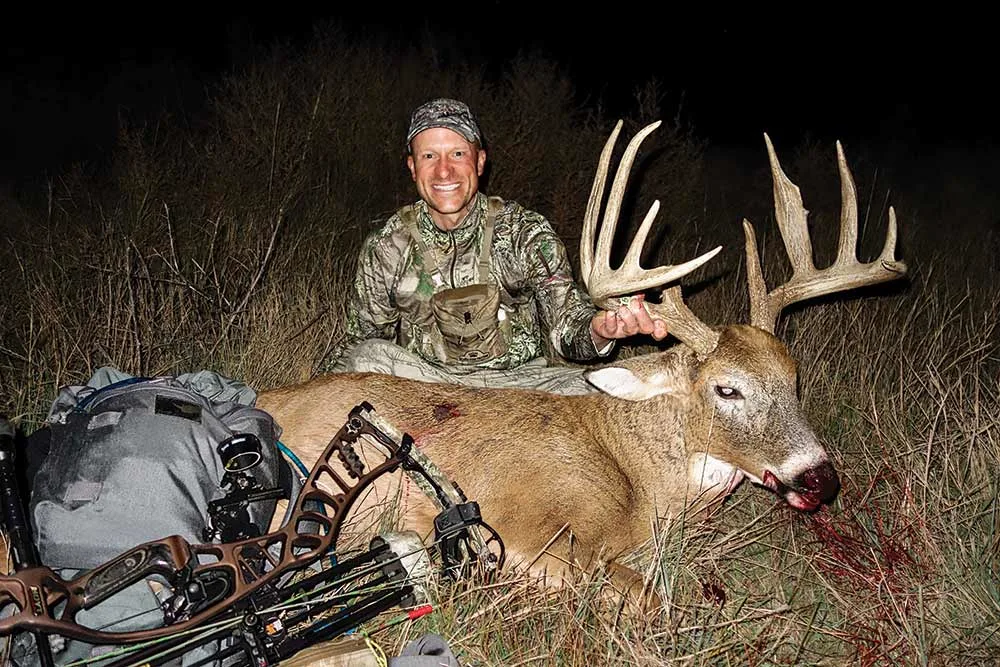
Trietch’s 3 Go-To Late-Season Deer Hunting Tools
Tough Bow
I’m a big fan of Hoyt bows, mainly for durability. Because a blade of grass can open a mechanical, I use a cut-on-contact broadhead made by Iron Will. It’s the best-made head I’ve ever used.
Quiet Clothes
It’s incredible how good clothing is today. I love Sitka’s midweight Apex System. It’s tight-fitting, so it doesn’t snag, it has all the right pockets, and it’s super-quiet.
Great Glass
Save your pennies and splurge on the best glass you can afford. It’s so important. Right now, I’m using a Swarovski STX spotting scope and Maven’s B1 10×42 binocular.
The Closer: Mark Drury
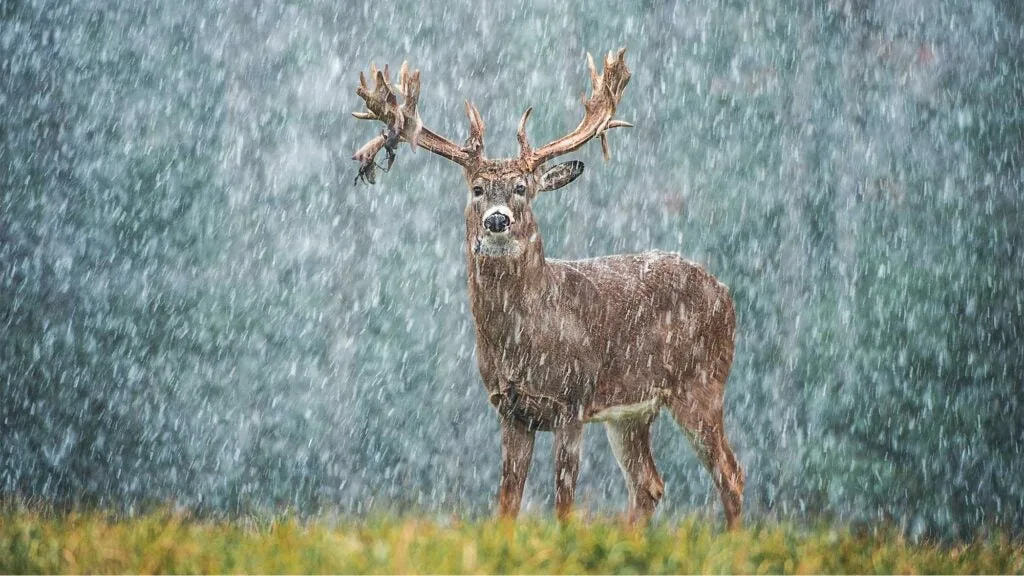
Method: Food-Source Ambush Primary
Hunting Area: Missouri and Iowa
Credentials: Drury has tagged more than 20 mature whitetails during the post-rut, with an average gross B&C score of 160 inches. His largest late-season buck grossed 191.
The late season in the Midwest isn’t merely good, according to Mark Drury, co-owner of Drury Outdoors. “It can be almost magic,” he says. “When whitetails are focused solely on food, and you have found or planted what they want to eat, there’s no better time or place to kill a truly huge whitetail.” Every December and January, Drury and his team see monster bucks that were ghosts all fall—huge deer they had either never gotten daylight pictures of or never seen at all. “That’s the power of post-rut food: If you’re on it, you are going to see the biggest bucks in the area.” Putting your tag on one is far from easy, though. You need loads of patience. You have to be willing to suffer bitter-cold conditions. And you’d better bring your A-game. “The smallest mistake will clear a field of feeding deer, and your hunt is over,” Drury says. But after decades of chasing these winter giants, he’s got it down to a system. —S.B.
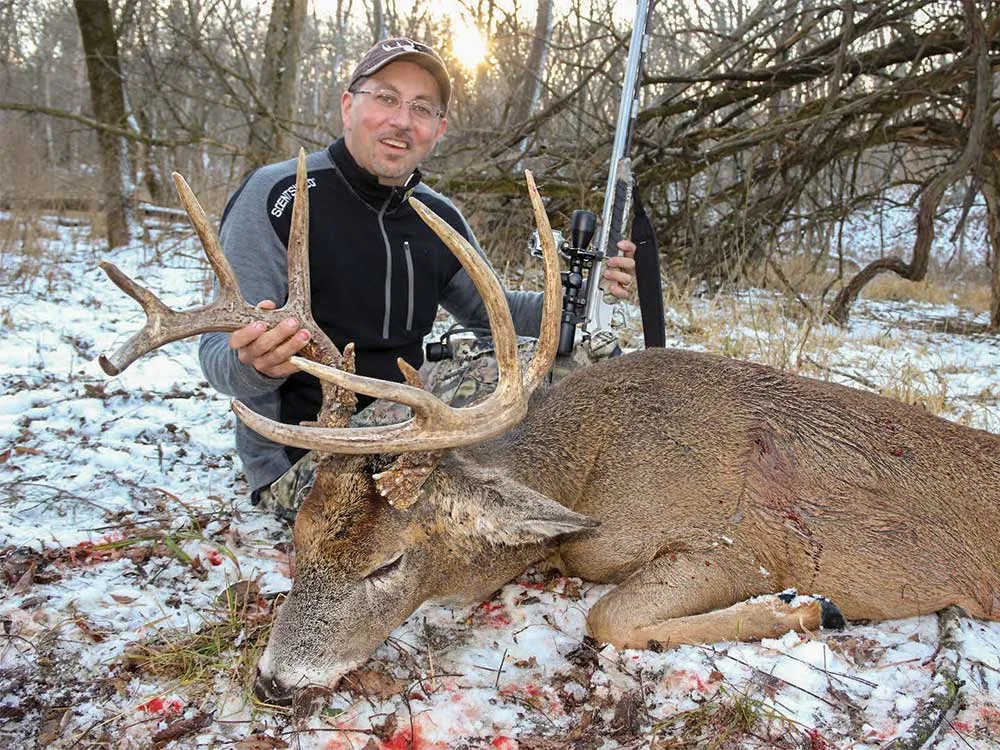
Drury’s Top 10 Winter Whitetail Secrets
If you manage your hunting ground, success in the winter starts in the summer, because it’s your off-season work that makes it all happen. The first key is to identify the best winter bedding areas, which around here means brushy south-facing slopes. Then you plant your food plots as close to those bedding slopes as possible, knowing that you’ll need good access to and from your hunting spots.
Planting your own food helps, a lot, but it’s not a must for success now. There are plenty of ag fields pulling bucks off south-facing slopes across the Midwest. Sacrifice a little hunting time and glass at prime time to find out where the deer are feeding.
I move all my trail cams to food sources now to learn which are the hottest. The key is to switch them to time-lapse mode to get a field-wide view. Set them to capture the last few hours of shooting light, and use the highest resolution, because you’ll be zooming in a lot to identify the best bucks.
There’s no magic bullet in terms of what to plant. Deer crave green forage in winter because they don’t get much of it then. So we plant plenty of clover and brassicas, and as long as the deer can get at it, those are our go-to plots. But we also plant soybeans and corn, in case the snow is deep. You have to cover all the bases.
You can kill deer from a tree stand now, but a blind makes it easier. It gets you out of the wind and helps hide your fidgeting. We put ours 6 to 8 feet up on wooden platforms, above a deer’s line of sight. But you still have to be very careful about movement inside the blind.
Plots at the bottom of a bedding slope are tough to hunt because deer are looking down at you as you come in. Unless you’ve got a ditch or creek bed that leads almost to the blind, the best option is to plant some kind of screening cover, like switchgrass, that allows you to sneak in.
Normally, I prefer to hunt cloudy days, but not during the late season. Sunny days with high pressure—meaning a barometer of at least 30.1—are hands down the best now. There is one exception: Really high-pressure days, where the barometer is 34 or so, make the deer lethargic. I can’t explain it. I just know what my experience has shown.
Most hunters know that a bitter-cold day, especially the first couple of the season, can really get deer on their feet and feeding. But my journals have proven to me that the first warm day or two after a big cold front is just as good. Not only will deer feed, but they’ll also be out early. And this goes for even the biggest deer, so you want to be sure to be in your blind then.
Hunting now requires a short memory. It’s so cold, stuff doesn’t work like it should, and the deer are psychotic. Everything is a struggle, and it’s easy to fail night after night. But you have to keep your head in the game because eventually, maybe in the next few minutes, you’ll get your chance to kill an absolute giant.
The hardest part is leaving your blind without spooking a field full of deer. The best solution is to have someone drive into the field and right to your hide with a truck or tractor. That doesn’t bother farmland deer. Lacking that, I’ll just wait until full dark and walk out if it’s windy. I know my scent isn’t blowing to the feeding deer, so all they have is the sound of something walking. On calmer nights, I’ll owl-hoot or coyote-howl, which almost always clears the field and allows me to slip out of there, knowing they’ll be back by my next hunt.
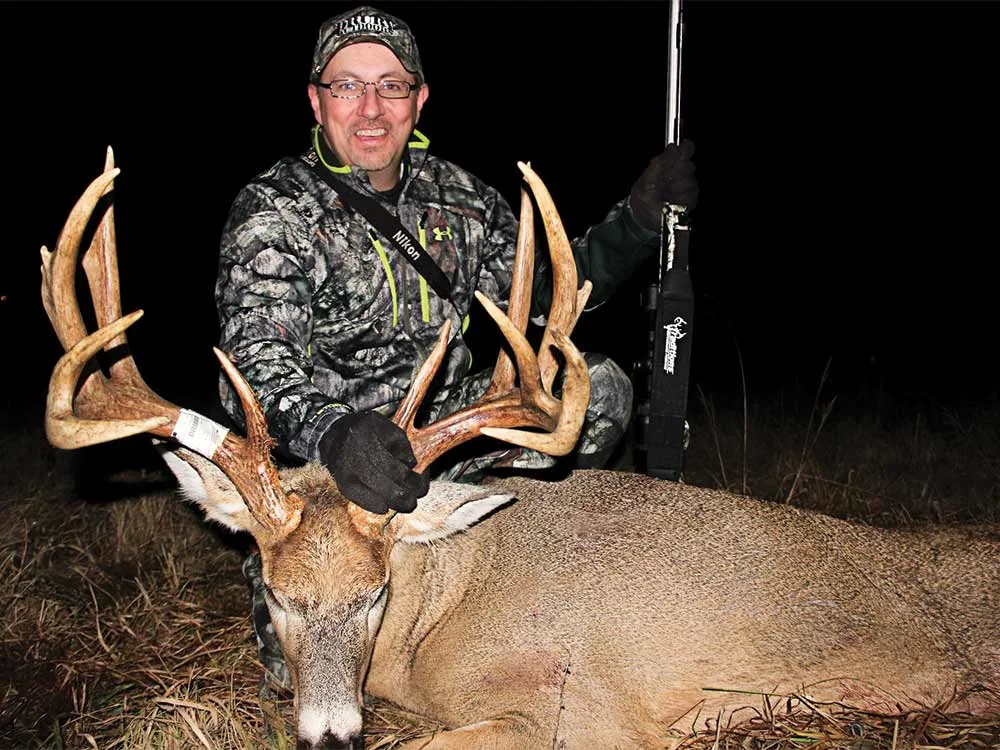
Drury’s Top 3 Late-Season Deer-Hunting Gear Items
Smoke and Fire
My favorite muzzleloader is the Traditions Vortek StrikerFire in .50 caliber. I use 110 grains of Blackhorn powder behind a 173-grain Traditions Smackdown Bleed Bullet, which is the best blackpowder bullet I’ve ever shot, and I’ve shot a bunch.
Hot Stuff
We bring a Little Buddy propane heater on cold days. Oddly, we get a lot of pushback about that on social media, like having heat is cheating. Why not stay as warm as you can?
Green Growth
Our go-to late-season food-plot seed is Biologic’s Winter Bulbs & Sugar Beets mix. The deer just hammer it at this time of year.
The Closer: Joe DiNitto
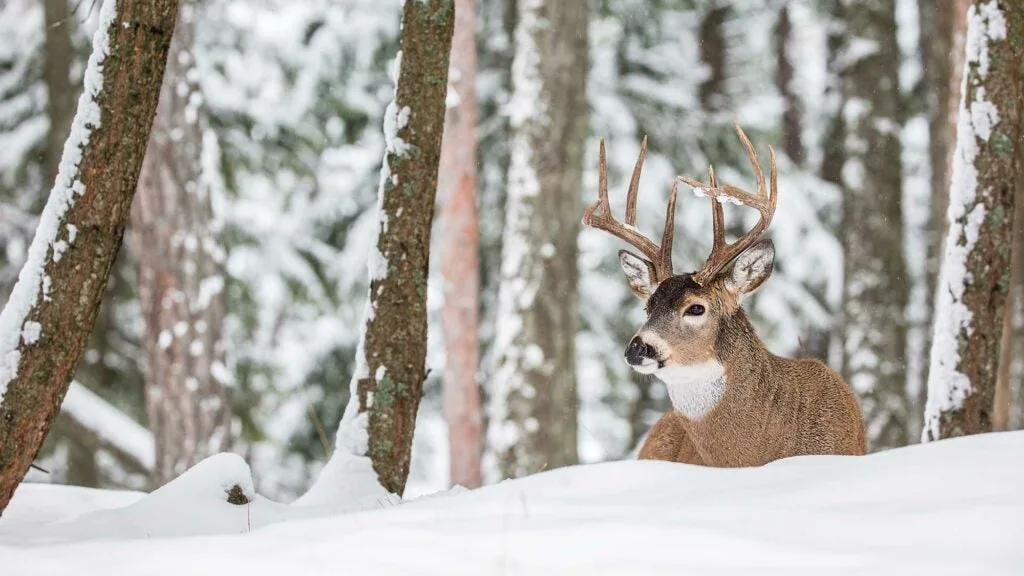
Method: Big-Woods Tracking
Primary Hunting Area: Adirondack Mountains, NY
Credentials: In the past 30 years, DiNitto has tracked and killed 28 Adirondack bucks averaging 6 years old each. Almost all were taken on public land and most in a single day of hunting.
The DiNitto family farm in central New York is 1,000-plus acres of alfalfa and corn broken by hardwoods and honeysuckle thickets. A deer nut’s paradise. And Joe DiNitto hasn’t hunted it in more than years. “I started hunting the Adirondacks with my dad and brother as a young teenager, but when I was 22, I tracked and killed my first big-woods buck.” That was it, he says. “Since then, I can’t shake the allure of big new country—and knowing there’s a buck up ahead of me.”
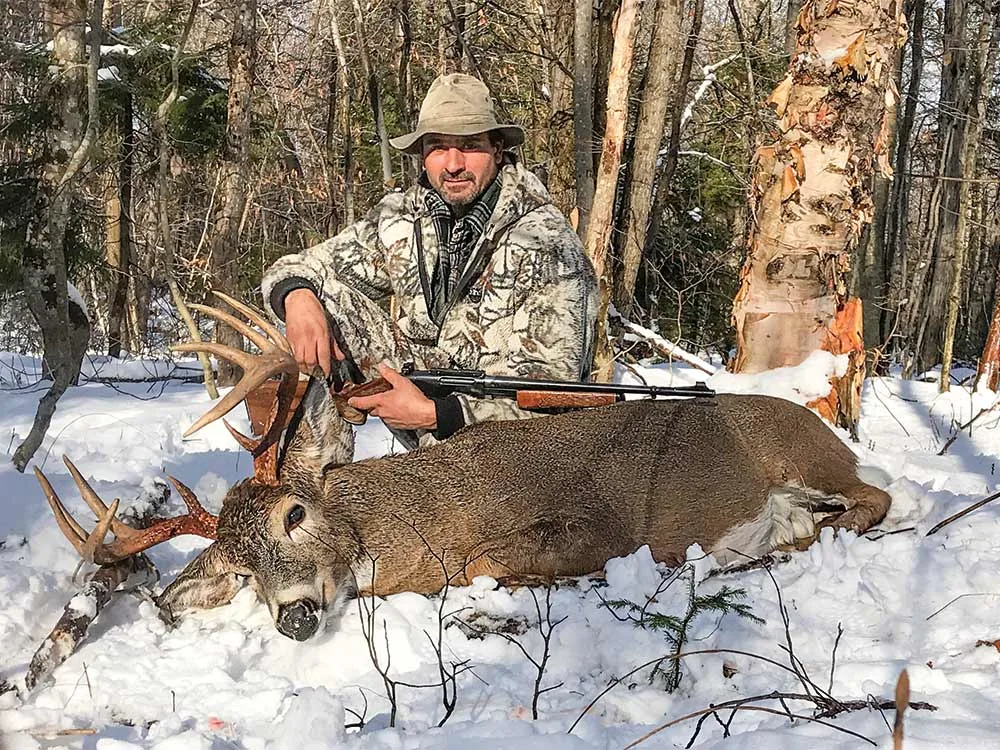
There’s also a practical reason: “Show me an easier way to get close to a mature whitetail buck, and I’ll do it,” DiNitto says. As a dairy farmer with four kids, he gets little time to hunt and zero time to scout. “I don’t own a trail camera.” But give him three days on snow and he’ll get a chance at a brute. Tracking is so effective, he says, that he almost feels guilty, and he can’t understand why everyone doesn’t do it. “There’s nothing more exhilarating than sneaking to within yards of a wilderness buck. I think about it 365 days a year.” —D.H.
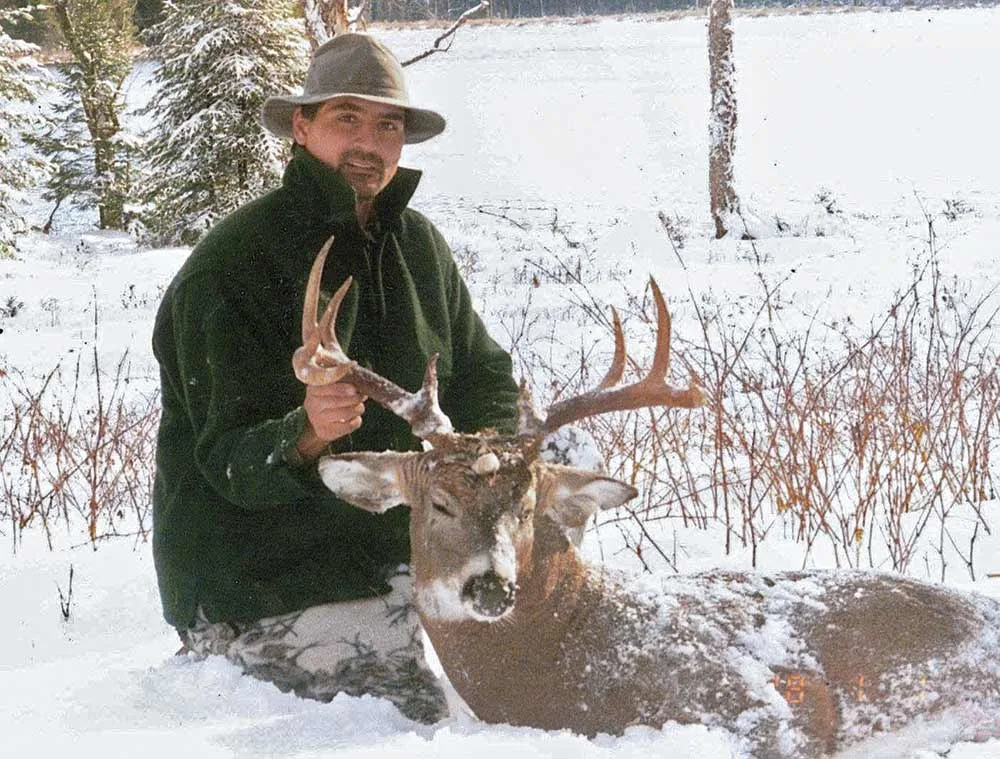
12 Tips, Opinions, and Advice on Tracking Big-Woods Bucks
Ninety percent of the bucks I kill are carbon copies, in terms of how I hunt. I need snow, but I don’t care what snow—2 inches, 10 inches, fresh or not. Then it’s a basic formula that most deer hunters are familiar with: You cover ground quickly on foot until you find a good buck track, then you follow it until it hooks left or right and starts to meander, which tells you that the buck is just up ahead, either feeding or bedded. Now you’re close, and this is the make-or-break part: Either you or your buck is going to make a mistake. Your job is to make sure it’s him.
A buck headed to bed is like a person driving home from work. If his track is lining straight out along the easiest path, he’s on the highway, moving fast—and you need to move fast to catch up. Eventually, the track will turn unexpectedly to the left or right. That’s the off-ramp, and you need to slow down. Next will come several meandering turns—through the neighborhood, into the driveway, and home.
What’s the first thing you do when you get home? You look in the fridge, right? Same with a buck. Before heading to bed, he’s going to eat something, and you can see this. His tracks will show that he stood in one spot or stepped to the side. You’ll see that he has disturbed some ferns or nipped a bud. That’s when everything should come to a standstill. You are in his kitchen.
The second you know you’re in a buck’s kitchen, stop dead and scan the area—for an ear, an antler, a twitch—for a full five minutes. If you don’t see the buck after that, take one slow step—not two or three—and do it again. And keep doing this until you either kill him, bump him, or walk up to an empty bed.
People tell me they don’t have the patience to hunt this way, but I don’t understand that. You’re telling me you have the patience to sit in a tree stand for five hours, but you don’t have the patience to stand still for five minutes between steps—when you know a big buck is right in front of you?
The post-rut is by far the best time to track a deer. I can’t stand the rut. It’s a tracker’s nightmare. Bucks are covering so much ground then that they’re almost uncatchable. A post-rut buck needs to feed and rest, so you can catch up to him. If you put me on even a two-day-old track during the post-rut, I guarantee I’ll either kill or scare that buck.
Where you hunt doesn’t matter. I drive to any piece of public wilderness and head in. Probably 60 percent of the bucks I kill are in places I’ve never seen before. More than half of those I kill on my first time in. When I step into the woods, I head uphill to the hardwood ridges, for one reason: I can cover more ground to find that big track.
The mistake everyone makes is they start hunting deer as soon as they leave the truck. Or they see a rub or a scrape and they go into stealth mode, looking around. No! Trackers hunt for tracks—and you don’t have to sneak up on a hoofprint. If you have trouble with this, don’t load your gun until you’re on a good track.
You have to believe 100 percent that the buck is there. Because he is. The second you doubt it, you’ll make a mistake. And I mean right there! My average shot distance on tracked bucks is around 40 yards. My closest was at 14. That buck had no idea I was anywhere near him.
I take the first good shot I get, and I don’t miss for lack of shooting. I’d say 20 percent of the deer I shoot at are bedded, 65 percent are on their feet, and 15 percent are on the move. The shots are fast but close, and not hard if you practice. In 30 years of tracking, I have never left a wounded buck in the woods.
How do you kill an old nocturnal buck in farmland? You wait for snow and you track him. There are some risks involved, of course. You may bump him onto another property. But you haven’t killed him yet. Go get him before his gets hit by a tractor-trailer or dies of old age. Give yourself a chance—and try tracking.
Never follow a track that you’re not enthusiastic about. People ask me all the time how I know if a buck track is worth following. I have a simple formula: If I look down and I don’t say “Holy shit!” then I do not follow that track.

DiNitto’s Must-Have Gear
Backup Battery
I keep two guns in my truck, ready to go. One of them is a Remington 7600 carbine in .30/06 with a peep sight. The other is a scoped Browning A-Bolt Micro Midas in 7mm/08. I prefer to have a scope, but if there is any bad weather, I’ll go without it. And you don’t need a scope to shoot a big buck at 40 yards.
Survival Gear
Three things I absolutely won’t leave the truck without are a map, compass, and flashlight. Two others I usually bring are a fire starter and space blanket. The first three should get you out of the wilderness 99 times out of 100. And the last two will keep you alive the one time they don’t.
The Closer: Jay Maxwell
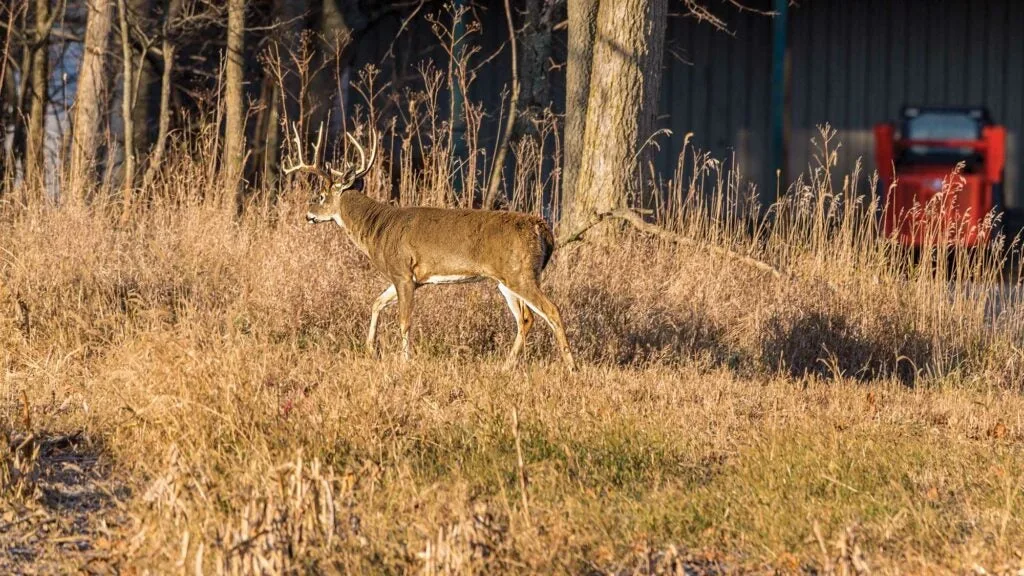
Method: Bowhunting Suburban Woodlots Primary
Hunting Area: Suburbs of Atlanta, Georgia
Credentials: Maxwell holds the Georgia state-record nontypical bow kill. He has taken 15 P&Y-class bucks, including three B&C-class trophies.
Jay Maxwell grew up hunting large farms in rural Georgia, but he started killing bigger bucks after moving to the suburbs of Atlanta. Maxwell owns a nuisance wildlife trapping and cull service in the city, and along with a few buddies, he films and produces online videos for Seek One Productions. That gives him a keen understanding of how deer use the small woodlots and drainages in the sprawling Atlanta metro area—and a flexible schedule to hunt when the conditions are just right. Like many suburban areas, Atlanta’s woodlots are typically bowhunting-only and tough to gain access to. That means the bucks get old—and big. In 2007, Maxwell killed the Georgia nontypical archery state-record buck in Fulton County. That 213 4⁄8-inch giant was chasing a doe in November. No surprise, the rut is Maxwell’s favorite part of the year—but he says the late season is almost as good. And in some ways, it can be easier. —W.B.
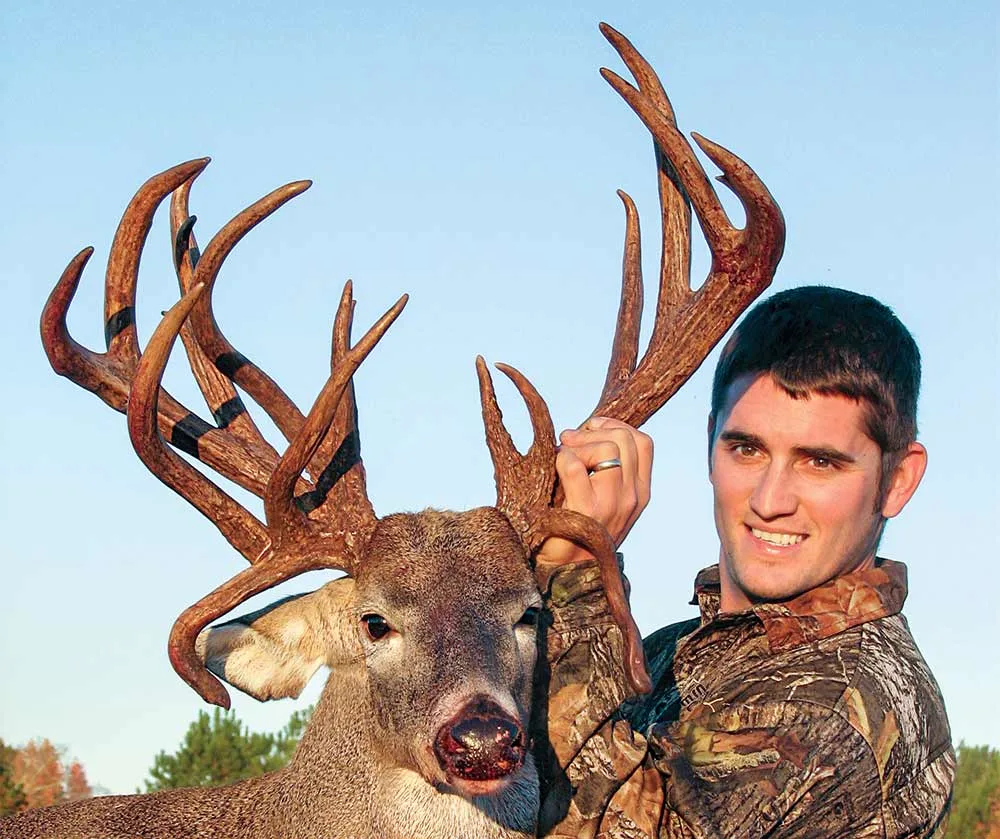
Maxwell’s 10 Secrets for Bagging a Late-Season Southern Buck
The woodlots we hunt are mostly river and creek drainages, and we set up in funnels to catch deer as they move to feed. We’re able to bait this year in the zone I hunt, and that’s a huge advantage. But in years past we’ve focused on privet bottoms, which are everywhere in Georgia (and much of the Deep South). Deer feed on it and bed in it, so they use those privet thickets all day.
The thing I love about the late season is that most hunters have filled their tags. Duck season is in. And the bucks kind of go back to summer patterns. They group up, and all they want to do is eat. Plus, they’re still hitting scrapes. Still breeding late does. Responding to calls. All the aspects are there to be successful, and the weather is finally cool.
Once the leaves are down, you’ve got to go to a bigger tree and get higher. I like to be in the 20- to 25-foot range, and in a double- or triple-trunk tree to avoid being silhouetted. When you see a deer coming, stand up and get ready as soon as possible. It’s very hard to get away with any movement once they’re close.
You must be constantly mindful of property lines. I’ve had big bucks bedded in easy range but 15 yards over the line. You also have to consider where a hit buck will go. You need permission to cross a property line to retrieve a dead deer. Fortunately, I’ve never been turned down for that.
Son, when I say make a mock scrape, make a mock scrape. I like a big limb on top of a hill. If there’s not a licking branch there, tie down or hinge-cut a tree, then make a scrape under it and fill it up with buck urine. They’ll hammer it right up to the season’s last day.
I’m a big caller. Starting in October, I call deer like turkeys. By December, when the woods are bare, deer can hear your calls from 400 yards away. I’ll use buck roars and snort-wheezes at times, but grunting and rattling are my go-to sounds.
I love a late-season wheat plot. You can’t usually find wheat in the burbs, but you can plant your own. It’s as easy as going into a block of woods, blowing off a 20-by-20-foot area of leaves, and covering the dirt with wheat seed. Soon as a rain hits, it’s green and the deer are on it.
Call-shy deer? I don’t think hunters call enough to make a difference. Many try a couple of times, don’t get a response, and quit. I try to call in every deer I see. Start out soft. Watch how they react, how their ears work. Remember that the whole time you’re calling at a spike, the big guy might be listening.
Weather doesn’t affect me much now. It’s all about the rut and food. There are still some bucks chasing. I don’t believe in a second rut. I think some does come into heat at different times and bucks don’t go out of rut once it starts. I don’t care if it’s 70 degrees or 30 degrees. Get the wind right and get out there.
Your rattling has to sound realistic. I’ve heard so many bucks fight. You see guys on TV, crashing and slamming antlers together—but that’s not what it sounds like. The majority of bucks lock up and just grind their horns. True story: When I was in high school, I was in a stand, and I could hear a grinding noise in the brush behind me. Funny thing, I actually thought it was a hog gnawing on a plastic bottle. I was crouched in my stand, looking and listening, for 20 minutes. Finally, I saw the back legs of a deer. It was an 8-pointer and a 9-pointer fighting. I killed the 9-pointer, and that grinding sound has stuck in my head ever since.
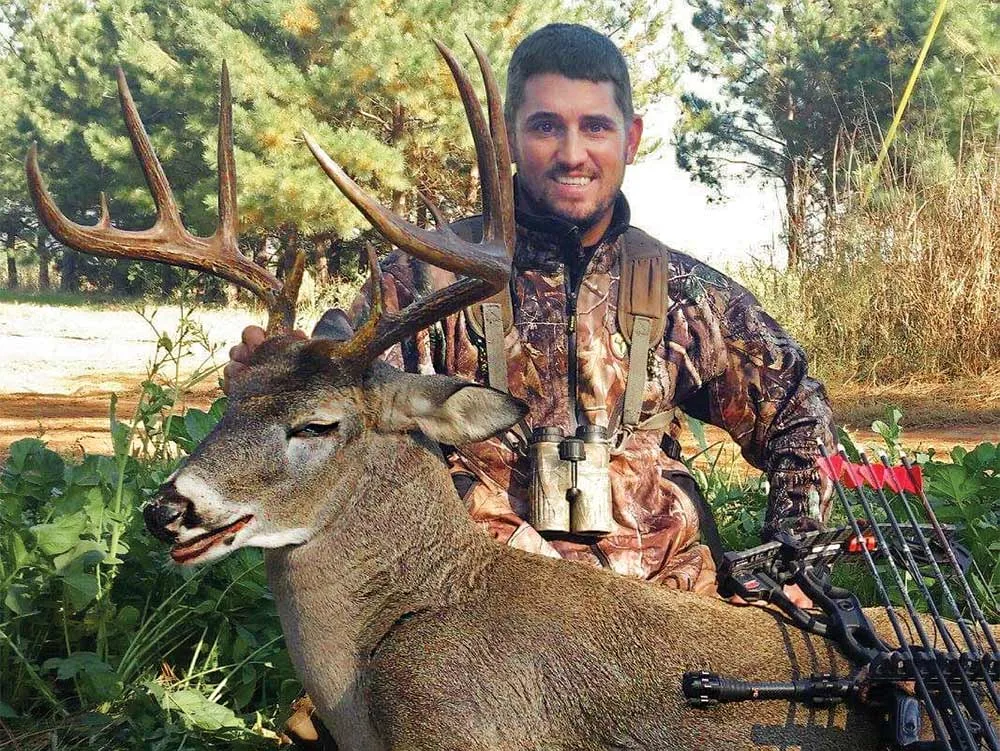
Maxwell’s Late-Season Deer-Hunting Gear
Good Calls
I like a call that lets me grunt, snort-wheeze, and buck-roar. There are a bunch of them on the market, but the classic Primos Buck Roar is my favorite. For rattling, I like a Primos Big Buck Bag. Those pegs, when you grind on them, sound like the real thing, and when you do it just right, you’ll get a pop that’s like an antler tine. Sometimes I’ll add or remove pegs from the bag to get the perfect sound.
Scent Killer
An Ozonics unit is one of my most important pieces of gear. It absolutely works.

